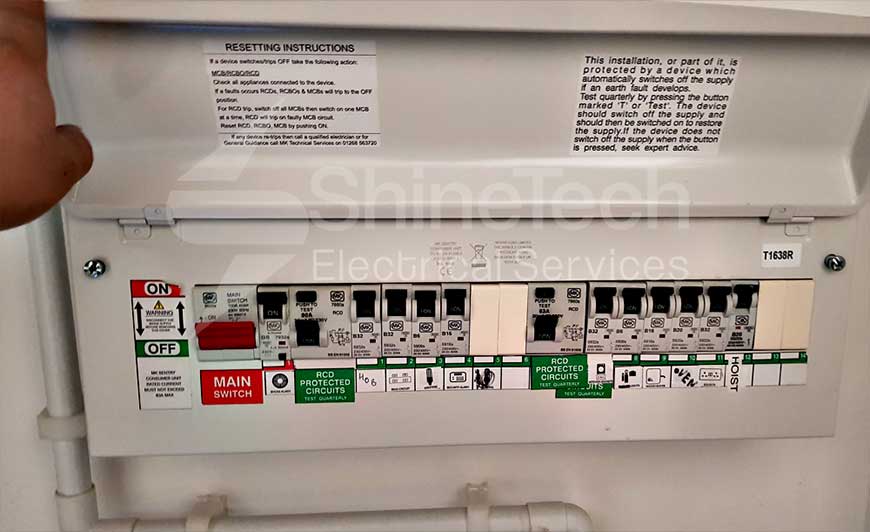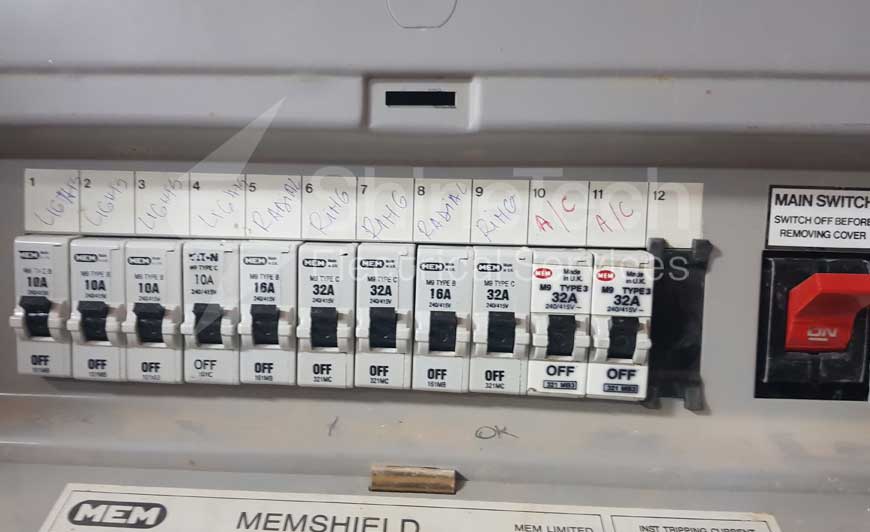As we rely so heavily on electricity, loss of electrics is undoubtedly one of the most annoying things these days. No matter how annoying it can be, everybody finds themselves in this situation at times.
Apart from a few exceptions, the majority of people tend to call emergency electricians when they have a loss of power. This can be either a complete or partial power loss.
The aim of this article is to give you a basic but essential step-by-step guidance on what to do in an event when a fuse or an RCD (Residual Current Device) in your consumer unit keeps tripping or you have a total loss of power.
Bear in mind these instructions are only intended for homes or for commercial spaces with similar setups to homes.
As much possible, this article avoids all technical gobbledygook.
To learn more about situations when there is a total loss of electrical power read our useful article on Common Causes of a Total Loss of Electricity Supply.
Note: If you are not familiar with the different components of your fuse box, otherwise known as Customer Consumer Unit (CCU), I suggest you first read our article about the components of a fuse board or consumer unit Fuse Board Components Explained in the Every-day Terms. It includes some useful images along with the explanations which may help you to recognise your fuse board or consumer unit and the components we will be talking about.
Electricity is hazardous. Unless you are an electrically competent person, it is strongly advised that you do not attempt to use any form of tools. All instructions in this article are tool-free solutions to your electrical problem, which you may be able to fix or at least narrow down the fault yourself.
Below are two sets of instructions, depending on the type of consumer unit you have:
Step-by-step instructions for eliminating faults for:
Eliminating a fault in consumer units with RCD protection
If you have an RCD main switch and it has tripped, you may have a total power outage. If you have a partial RCD protection or split load dual RCD protection, you may have only lost power on the set of the circuits protected by the tripped RCD. In this case, you may have few things working and a few things not.
Look at your fuse board and check if an RCD has tripped. (If it has tripped, the switch lever will be down or stuck in the middle.)
If the RCD has tripped, flick it up and if it resets (stays up) you should now have power. If the RCD switch lever has stuck in the middle, push it all the way down first then lift it up.
Occasionally, the RCD trips for no valid reason, which is called nuisance RCD tripping.

What if the RCD does not reset?
If the RCD does not reset, then there must be some sort of fault on the fixed wiring (usually it’s an earth fault), or maybe one of your appliances is faulty and causing the RCD to trip.
Okay, it’s time to locate a fault, be prepared to get your hands dirty!
Step - 1First thing first is to locate a tripped RCD, which you have already located above!
Step - 2Turn off all the MCBs (smaller breakers next to the RCD) and then reset the RCD. If the RCD is stuck in the middle, push it all the way down first and then lift it up.
If the RCD resets or stays up, that’s good news that you may be able to get your electrics back, at least partially. Continue to Step 3.
If the RCD does not reset, skip Step 3 and go to Step 4.
Note: If you have repeated Step 2 after following instructions on Step 4 and If the RCD resets this time, continue to Step 3. If the RCD still does not reset go to Step 7.
Step - 3Start turning on or flicking up one circuit breaker (MCB) at a time. And, be sure to wait a few seconds before switching on the next one along. Continue until a circuit breaker triggers the RCD to trip. Now, you have identified the circuit breaker (MCB) of the faulty circuit. Keep the circuit breaker in an off position and turn on all of the others.
Don’t forget to reset the tripped RCD! Now, you have everything working apart from the circuit that may have a fault.
Don’t stop yet, there are few more steps to go through!
Step - 4If you had to skip step 3 then, unfortunately, you will have to unplug (not just switch off) everything plugged into the sockets, including extension leads, and turn off all other electrical items including the lights and any electrical appliances permanently connected to the fixed wiring such as integrated fridge-freezer, oven, hob etc. Now, repeat Step 2
If you have been through Step 3 and identified the problematic circuit and you know the electrical items powered from that circuit – you don’t have to unplug or switch off everything in the home. Just unplug and switch off all electrical items powered from the circuit which is causing the RCD to trip.
Step - 5Go back to the fuse board and turn on the MCB that was causing the RCD to trip. If the RCD doesn’t trip this time, now we know at least one of the appliances that you have unplugged is the culprit. Continue to Step 6.
Step - 6Now, it’s time to identify the electrical item which is causing the RCD to trip. Start plugging one appliance back in at a time. Make sure the plug socket is switched off and only turn it on after plugging in the appliance. Remember you have switched off the fixed electrical appliances too, don’t forget to turn them on as well! Continue until something triggers the RCD to trip. Now you know which appliance is the culprit. Don’t use it until it is repaired to the industry standard or given the cost implication of repair – you may simply want to replace it with a new one.
Now, the bad news is that you have a faulty appliance but the good news is that you have got power back!
Step - 7If you have tried everything above and still the problem persists, then fixing such faults is beyond the scope of this blog.
If you are within our service area, we will be more than happy to assist you with your electrical issue. Please contact us.
Eliminating fault in consumer units without RCD
If you have a consumer unit with MCBs (Miniature Circuit Breakers) and RCBOs (Residual Current Breaker with Overload Protection) or a fuse board with rewireable fuses and cartridge fuses, then a single fault only affects a single circuit. This means you will only have a loss of power on one circuit, the rest of the electrics in your home should still be working.
Note: The instructions below are only for the fuse boards without RCD protection. Read the instructions above for the RCD protected fuse boards.

Although, I have cautioned you to not to use any form of tools, however, when dealing with rewireable fuses you need a flathead screwdriver and scissors.
You may also want to have some spare fuse wire or cartridge fuses to get through a few experiments, as fuse wires and cartridge fuses cannot be reused once they blow. Fuse wires and cartridge fuses come with the current rating. It is crucial to use the exact same size fuse wire or cartridge fuse as marked on the fuse that you intend to replace. Usually, you will see a marking like 5A, 15A, 20A, 30A, etc.
Follow the steps below to eliminate fault:Step - 1Identify the blown fuse or tripped MCB or RCBO. You now know which circuit is causing you problems. Unplug all the plugs and switch off all the lights and electrical appliances that cannot be unplugged on that circuit.
Step - 2Replace the blown fuse or reset the MCB or RCBO by flicking the switch back up.
If you are handling rewireable or cartridge fuses, make sure you have turned off the main switch before you insert the rewired fuse. I am sure you definitely don’t want to blow a fuse on your hand as you insert it. This can really hurt!
If the fuse does not blow again or the MCB or RCBO resets, go to step 3. If the fuse blows and the MCB or RCBO trips again – it’s time to call an electrician.
We would be more than happy to assist you with your electrical issue. If you are within our service area, please contact us.
Step - 3Now we know that it’s an appliance or an electrical accessory that is the culprit. To find out which one is causing the fuse to blow or MCB or RCBO to trip, start plugging in or switching on one appliance at a time. Continue until the faulty appliance or accessory blows the fuse or trips the MCB or RCBO again. Now you know you should not be using that appliance or accessory.
If you are dealing with fuse wire or cartridge fuses, you will have to replace these again. While replacing these fuses don’t forget the safety precautions explained above. If you have MCB or RCBO, you can simply reset them.
Power should now be restored. Don’t use the faulty appliance until it has been repaired.

